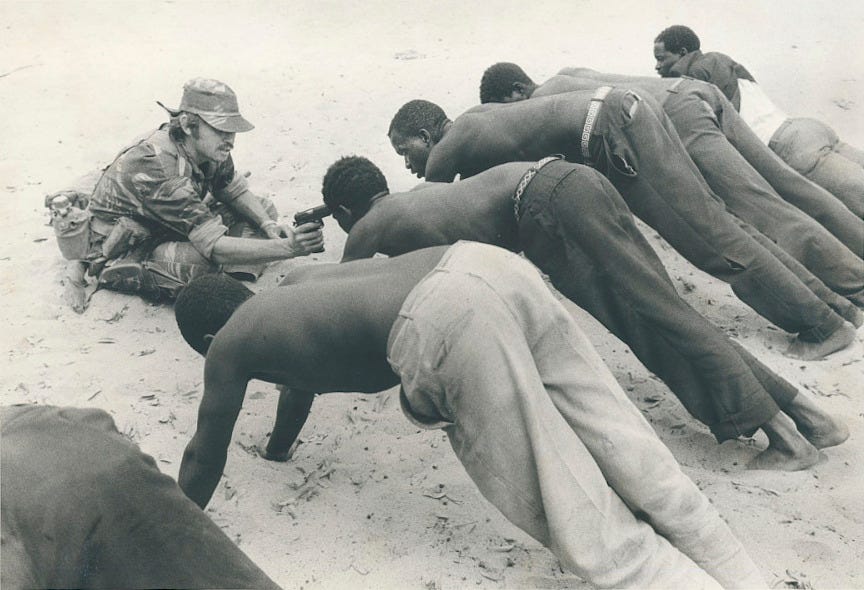Most Americans are unfamiliar with the particulars of apartheid in South Africa. We have a smattering of understanding; most older Americans remember Nelson Mandela as the icon, not Nelson Mandela as the person. And some may remember the idea of South Africa under apartheid without any fundamental understanding of what that meant.
Apartheid now makes us think of some backward policy long forgotten. However, the implementation generated by South Africa holds lessons for the world now.
What Was Apartheid?
Apartheid is the name given to a specific application of South Africa’s laws that prevented the majority group of Black South Africans from mixed marriages, unlawful racial intercourse, voting, holding power, or starting a business in a “white South African” area. Blacks, even servants who traveled to work, needed a pass to be in white areas.
The word Apartheid has become used – or overused and degraded – for many situations where a group of people who live in a country are ostracized or have burdensome requirements on them. The word has been used to describe “Jim Crow” America, Turkey (towards the Kurds), Israel (towards Palestinians), Germany (older interpretation towards Turkish workers), and others. But the original meaning of the wording describes the system where a small population of powerful whites makes laws to dominate over a much larger population legally.
Apartheid is a word created for South Africa. But if you look at how it was actually implemented, this term describes the European colonial system from the 1500s to the 1980s. Throughout Africa, Asia, and the Americas, when under colonial rule, a small population of colonial settlers ruled over large populations of “natives.” Even the term “natives” subtly denigrates the original inhabitants as less than equal to their colonial rulers.
Apartheid as Implemented by South Africa
The (white) legal system in South Africa divided the population by ethnicity, which was critical in implementing this system. It might seem odd, but the definition of who was and who wasn’t Black was laid out in several laws governing both heritage and action.
Whites were defined as people where both parents were white AND “possessed the "habits, speech, education, deportment and demeanour" of a white person. So, whites who advocated for Black rights might be reclassified.
Blacks were classified as belonging to an African race or tribe.
Coloureds were defined as those that could not be classified as Black or White.
Later, the category of “Indian” was added to support the large influx of Indians brought to South Africa as workers.
Note: The definition of Black was less important in Pre-Civil War America. In the areas of the country where slavery was legal, the status of the child followed the status of the mother. This was different than ancestry and inheritance for whites. This definition meant that all children of slaves were slaves, despite who their fathers were. It enabled the rape of female slaves by white men with no consequences.
Some of South Africa tests to see if a person was “Coloured” or “Black” were offensive and arbitrary. Done my minor officials, the tests included the pencil test, in which a pencil was shoved into the subjects' curly hair, and the subjects were made to shake their heads. If the pencil stuck, they were deemed Black; if dislodged, they were pronounced Coloured. Other tests involved examining the shapes of jaw lines and buttocks and pinching people to see what language they would say "Ouch" in. As a result of these tests, different members of the same family found themselves in different race groups. Further tests determined the membership of the various sub-racial groups of the Coloureds.
Blacks who worked in White areas had to reside in Black Territories close by or in Black homeland campuses in White areas.
To blunt Western criticism, South Africa set up “homelands” of various tribes and areas, trying to provide some sense of nationhood without sacrificing the White power structure. These areas provided propaganda cover to the country without sharing power.
The World’s Response
Beginning as early as 1959, there were calls to end apartheid by boycotting the South African government and businesses. These grew, particularly in Great Britain and Ireland, which had deep ties to the South African businesses. In 1968, South Africa barred a British Cricket team because the team included a mixed-race player. The boycott of sports was critical to South Africa as it wanted international acceptance and saw the opportunity in the world of sports.
In the 1970s, musicians in Great Britain prevented South African artists from playing in England. Many music artists from both America and Europe boycotted the country.
In 1974, the UN ejected South Africa from the United Nations.
Ordinary people in the United States and Great Britain pressured their governments and businesses to honor a boycott. During this time, the boycott campaign was spearheaded by students. The boycott system grew and hardened as the public learned more about South Africa’s system.
However, international pressure campaigns on South Africa were usually mitigated by the actions of The United States, Great Britain, and France, all major trading partners with South Africa. International pressure to stop military purchases by South Africa led to alternative military suppliers, including France and Israel. Israel and South Africa worked together from the 1967 Israeli War through the 1980s.
The foreign push for change was most critical in 1985 when US banking implemented a boycott under domestic pressure and domestic politics.
The Majority Takes Control
The white government saw its power weaken, and so in the late 1980s, the government undertook rapprochement with the Black majority. The effects of the boycotts in international sports, diplomatic ostracization, and the fear of a race war drove this change in policy. This culminated in the 1990 release of the anti-apartheid activist and prisoner Nelson Mandela. He worked with the white South African president F. W. de Klerk. Mandela and de Klerk led efforts to negotiate an end to apartheid, which resulted in the 1994 multiracial general election in which Mandela led the ANC to victory and became president. Leading a broad coalition government, Mandela emphasized reconciliation between the country's racial groups. His government created the Truth and Reconciliation Commission to investigate past human rights abuses.
His election ushered in a new period where South Africa became a leading voice in Africa and in the peaceful power transfer between minority and majority populations. Nelson Mandela and Desmond Tutu were widely respected around the world. Their commitment to an inclusive society is a model of success despite the terrible obstacles they had to overcome. Nelson Mandela had been imprisoned for 20 years and still brought a peaceful change.
I won’t go into the problems of the past few decades because apartheid is no longer the law and the country’s new problems are those more typical to newish governments.
Some Interesting Things South Africa and the end of Apartheid.
The impact of sports
Sports are and were a unifying force after apartheid. In the 1995 Rugby World Cup, Nelson Mandela presented the trophy to an overwhelmingly, but not exclusively, white rugby team. Integration in sports transcended the white, black, and coloured system. it promoted national unity.
The Truth and Reconciliation Commission
Established in 1996 and chaired by Bishop Desmond Tutu, the True and Reconciliation Commission heard from people who suffered human rights violations. Some were chosen to be heard nationally and were broadcast. The Commission also heard from perpetrators of these violations, who were often given amnesty after their testimony. (Wikipedia) South Africa's first coalition government chose to pursue forgiveness over prosecution and reparation over retaliation. It has been a model for reconciliation internationally since.
South Africa was the First Country to Give up Nuclear Weapons
There is no question that South Africa had nuclear weapons. There is speculation of how it came to get them. The best guess is that South Africa worked with Israel to develop the technology. Regardless of how they got them, they destroyed their six weapons during the transition to majority rule. I am not sure they would or could have used these weapons on their population, but they had no international adversaries that had threatened war with the country, so that seems the only explanation.
There is still massive inequity in South Africa
Nelson Mandela did not advocate for the nationalization of white businesses or farms. His negotiations with F. W. de Klerk allowed the white South Africans to keep their property and businesses. Going forward, Government spending was primarily directed towards improving the lives of Blacks, whose infrastructure was horrid. Electricity and sanitation were delivered to Blacks in the ghettos, and life HAS improved, although not near the level of white South Africans.
The Lesson of Rhodesia
From 1965 to the 1980s, the unrecognized nation of Rhodesia maintained the same Apartheid system as South Africa. However, the internal pressure on that country was much stronger than in South Africa. From 1976 through 1979, internal rebellion against the white government forced the national leaders to work with Black politicians. Dependent on Black recruits in the white army led to a majority in the army who were not given the same rights as the white officers. This resulted in an army being reluctant to put down the rebellion. This was the type race war F. W. de Klerk was afraid of.
The White Residents of South Africa were invested in a peaceful solution
Rhodesia and other independent colonies had transient white populations without roots. South Africa has a (relatively) long history white residents. Dutch settlement began in 1653. The (white) group of descendants are Afrikaners – which literally meant African Dutch at the time. They were forced into the Cape District, where they established businesses, farms, settlements, and wineries. After that war, many more English settlers came and established roots.
Reassuring these long-time white South Africans after apartheid was critical in keeping the economy growing. This decision has lead to South Africa’s relative wealth and power in the international community. If you have heard of the BRICS, which are the rapidly evolving and economically powerful non-Western nations, they are Brazil, Russia, India, China, and South Africa. So, the decision and method of ending Apartheid were successful if judged by the economy.








